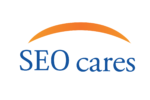Are you looking to attract more quality traffic to your website?
One powerful way to do that is by harnessing the power of social media.
Social media platforms like Facebook, Instagram, and Twitter offer great opportunities to reach a wide audience and drive traffic to your website.
In this article, we will explore simple yet effective strategies to increase your website traffic through social media.
Tips to Increase Website Traffic Using Social Media
Below are the multiple methods to increase website traffic using social media in 2023.
Optimize your social media profiles:
When you optimize your social media profiles, it means you make them look good and give people the right information.
- Write a clear and interesting description of yourself or your business.
- Add a link to your website so that people can visit it easily.
In doing so, you are making it simpler for people to comprehend who you are and what your website is about.
They will be more likely to visit your website if they find your social media profile interesting and informative.

Share valuable content:
Sharing valuable content means posting things on social media that are helpful, interesting, and meaningful.
- It can be educational articles, fun videos, or tips that people will find useful.
- When you share valuable content, people will appreciate it and be more likely to visit your website to learn more.
- Focus on creating and sharing content that will make people’s lives better or teach them something new.
This way, they will see you as a trustworthy source of information and be curious to explore your website for more valuable content.
Use eye-catching visuals:
Using eye-catching visuals means sharing pictures, videos, and graphics that look really good and catch people’s attention.
When you scroll through social media, you often stop at things that look interesting or beautiful.
Eye-catching visuals in your posts can grab people’s attention and make them stop to read what you have to say.
- It could be colorful images, cool designs, or funny videos.
- The more attention-grabbing your visuals are, the more likely people will be to click on your posts and visit your website.
Share blog posts and articles:
Sharing blog posts and articles means posting links to your written content on your social media accounts.
If you have a blog or write interesting articles, you can share them on platforms like Facebook or Twitter.
This way, people who follow you or see your post can click on the link and read the full article on your website.
It’s like giving them a sneak peek and inviting them to read more.
Sharing your blog posts and articles can drive traffic to your website and show people that you have more in-depth knowledge to offer.

Implement social sharing buttons:
Implementing social sharing buttons means adding buttons on your website that allow people to easily share your content on their own social media accounts.
When someone finds something interesting on your website, they can click the social sharing button and share it with their friends or followers.
- This helps to promote your website and make it more well-known.
- Making it easier for visitors to share your content can help you attract more traffic from social media platforms and reach a wider audience.
Engage with your audience:
Engaging with your audience means interacting with the people who follow you on social media.
- Respond to their comments, messages, and mentions. When someone asks a question or leaves a comment, take the time to reply and have a conversation. This shows that you care about your audience and value their input.
- Engaging with your audience helps you to build relationships and loyalty with them. People will be more likely to visit your website if they feel a connection with you and trust your expertise.

Use relevant hashtags:
Using relevant hashtags means adding specific keywords or phrases with a “#” symbol in front of them to your social media posts. Hashtags are like virtual labels that help people find your content.
- When you use relevant hashtags, your content will show up in search results for those hashtags, making it more likely that people will find it. For example, if you’re posting about fitness, you might use hashtags like “#fitness” or “#workout“.
- Using relevant hashtags can help your posts be found by more people, including those who are not following you. When people search for or click on those hashtags, they’ll see your posts and may visit your website if they find your content interesting.

Use multiple social media channels: increase the chances of more traffic
Using multiple social media channels means not just relying on one platform, but utilizing several different platforms to promote your website.
Different people prefer different social media platforms, so by being present on multiple channels, you increase your chances of reaching a larger audience. For example, you could have accounts on:
You can reach a wider audience and attract more visitors to your website by expanding your social media presence.
Participate in industry-related discussions:
Participating in industry-related discussions means joining groups, communities, or forums on social media that focus on topics related to your website’s niche.
- Be a part of the conversation, share your knowledge, and offer helpful information.
- Actively participating in discussions is essential to establish yourself as a knowledgeable and reliable source in your industry.
- When people see your valuable contributions, they may be curious to learn more about you and visit your website for further information or resources.
Collaborate with influencers:
Collaborating with influencers means working together with individuals who have a large following on social media and are influential in your industry or niche.
This could involve guest posting on their blog, co-creating content, or having them promote your website or products.
- You can tap into an influencer’s existing audience and leverage their credibility and reach by partnering with them.
- When an influencer recommends or features your website, their followers are more likely to check it out, resulting in increased website traffic.

Run social media contests or giveaways:
Running social media contests or giveaways means organizing fun competitions or offering freebies on your social media platforms.
Encourage people to participate by visiting your website, sharing your content, or subscribing to your newsletter.
Contests and giveaways create excitement and incentivize people to engage with your brand and visit your website for a chance to win something.
This can drive traffic, increase brand awareness, and potentially attract new customers.
Leverage user-generated content:
Leveraging user-generated content means encouraging your audience to create and share content related to your brand or products.
This could be asking them to post pictures using your products or sharing their experiences with your services.
- When users create content about your brand and share it on social media, it showcases their genuine satisfaction and enthusiasm.
- You can then feature this user-generated content on your own social media accounts, giving credit to the creators and linking back to your website.
- User-generated content not only strengthens your relationship with your audience, but it also attracts new visitors to your website who are interested in seeing real-life examples and testimonials.

Utilize live video streaming:
Utilizing live video streaming means broadcasting real-time videos on platforms like Facebook Live, Instagram Live, or YouTube Live.
- This allows you to connect with your audience in a more personal and interactive way.
- You can host Q&A sessions, give product demonstrations, or take them behind the scenes of your business.
- Live videos create a sense of immediacy and authenticity, encouraging viewers to engage and ask questions. During the live stream, you can direct them to visit your website for additional information, resources, or exclusive offers, thereby increasing website traffic.
Share testimonials and reviews:
Sharing testimonials and reviews means highlighting positive feedback and experiences from your satisfied customers.
- You can feature customer testimonials on your social media accounts, including quotes, ratings, or written reviews.
- Showcasing the positive experiences of others builds trust and credibility with potential visitors.
People are more likely to trust recommendations from real customers and may be motivated to visit your website to learn more or make a purchase based on these positive reviews.

Run social media ads:
Running social media ads means creating paid advertisements on platforms like Facebook, Instagram, or Twitter. With social media ads, you can target specific demographics, interests, or behaviors to reach your desired audience.
- These ads can include engaging visuals, compelling messages, and a call-to-action that directs people to visit your website.
- Designing and targeting your social media ads will drive traffic to your website and convert them into customers or subscribers.
Offer exclusive promotions:
Offering exclusive promotions means providing special discounts, offers, or incentives exclusively for your social media followers.
- Create unique coupon codes or limited-time deals that can only be accessed through your social media platforms.
- Offering something exclusive gives people a reason to follow you on social media and visit your website.
- Exclusive promotions create a sense of urgency and FOMO (fear of missing out), motivating potential visitors to take action and explore your website for exclusive benefits.

Utilize social media groups and communities:
Utilizing social media groups and communities means joining relevant groups or communities on platforms like Facebook or LinkedIn.
These groups gather people with similar interests, hobbies, or professions.
- Actively participate in discussions by sharing your expertise, answering questions, and offering valuable insights.
- When appropriate, provide links or resources from your website that can further help the group members.
- You can establish yourself as an expert in your field and draw in potential visitors who are interested in learning more about your website by being an active member and providing value.
Repurpose content:
Repurposing content means taking your existing blog posts, videos, or other forms of content and presenting them in different formats for social media.
For example, you can create short video clips, infographics, or snippets from your blog posts and share them on social media platforms.
- This allows you to reach a wider audience by catering to different preferences and consumption habits.
- You can whet people’s appetite and entice them to visit your website for the full-length version or more detailed information by repurposing your content.

Build relationships with influencers and industry leaders:
Building relationships with influencers and industry leaders means connecting with individuals who have a significant presence and influence in your field.
- Engage with their content, share their posts, and provide thoughtful comments.
- By building relationships, you can get on their radar and potentially collaborate with them in the future. Building relationships with influencers and industry leaders can lead to opportunities such as guest blogging, podcast interviews, or joint ventures, where they can help promote your website to their audience.
You can drive more traffic to your website by building meaningful connections and nurturing those relationships over time.
This is because the people you connect with will be more likely to share your content with their own networks, which can help you reach a wider audience.
Which social media is best for website traffic?
There is no one-size-fits-all answer to this question, as the best social media platform for website traffic will vary depending on your target audience and the type of content you share.
However, some of the most popular social media platforms for driving website traffic include:
- Facebook: Facebook is the most popular social media platform in the world, with over 2.989 billion active users. It’s a great platform for reaching a large audience, and you can use it to share a variety of content, including blog posts, videos, and images.
- Twitter: Twitter is a microblogging platform that allows users to share short messages of up to 280 characters. It’s a great platform for sharing breaking news, updates, and other timely content.
- LinkedIn: LinkedIn is a professional networking platform that’s used by over 900 million people. It’s a great platform for sharing business-related content, such as white papers, case studies, and webinars.
- Pinterest: Pinterest is a visual discovery platform that allows users to share images and videos. It’s a great platform for sharing product images, lifestyle inspiration, and other visually appealing content.
- YouTube: YouTube is the world’s second-largest search engine, and it’s a great platform for sharing videos. If you create high-quality videos that are relevant to your target audience, you can drive a lot of traffic to your website from YouTube.

What is an example of social media traffic?
An example of social media traffic is when someone clicks on a link to your website that was shared on a social media platform.
For example, if you share a link to your blog post on Twitter, and someone clicks on that link, that would be considered social media traffic.
How to increase traffic on the website through SEO
There are many ways to increase traffic on a website through SEO.
Some of the most effective methods include:
- Creating high-quality content: This is the most important factor for improving your website’s SEO. Your content should be informative, well-written, and relevant to your target audience.
- Optimizing your website for keywords: When you optimize your website for keywords, you’re essentially telling search engines what your website is about. This will help your website rank higher in search results for those keywords.
- Building backlinks: Backlinks are links from other websites to your website. They’re a signal to search engines that your website is authoritative and trustworthy.
- Social media marketing: Promoting your website on social media can help you drive traffic to your site. When you share links to your website on social media, be sure to use relevant keywords in your posts.
Conclusion
So, now you have learned some awesome tips to increase your website traffic through social media!
Don’t forget to make your profiles look good, share helpful content, talk to your followers, and work with popular people in your field.
Do these things regularly, be creative, and you’ll get more people to visit your website.
Start using these tips today and see how your website traffic grows!
Related:
Does Website Traffic Help SEO? [Yes, It Does]
SEO for Instagram: Get More Reach and Followers
How to Get 1k Followers on Instagram in 5 Minutes?
15 Ways to Get Popular on Instagram in 2022
SEO for Facebook for More Reach, Likes, Followers, and Engagements

